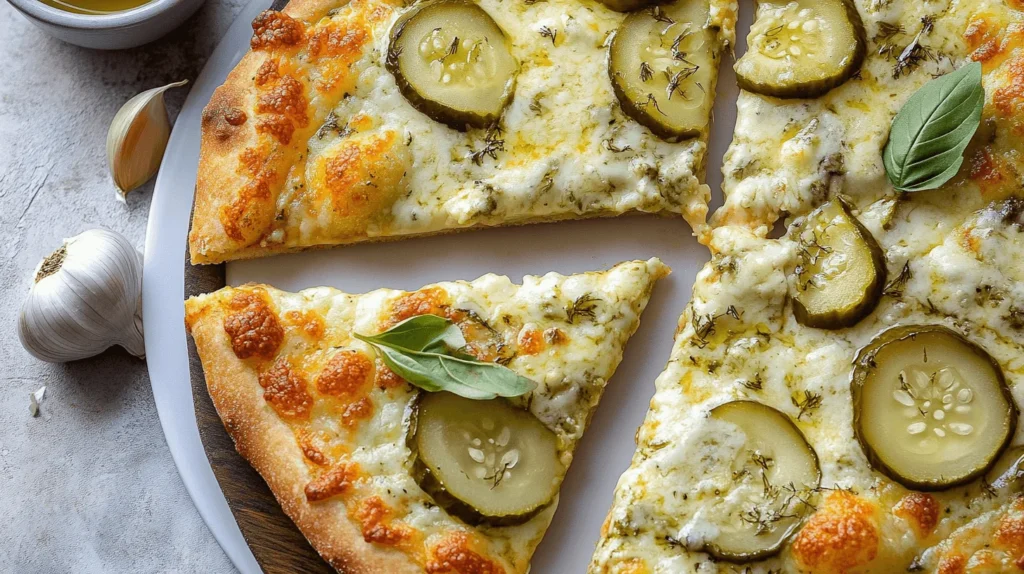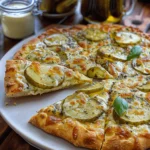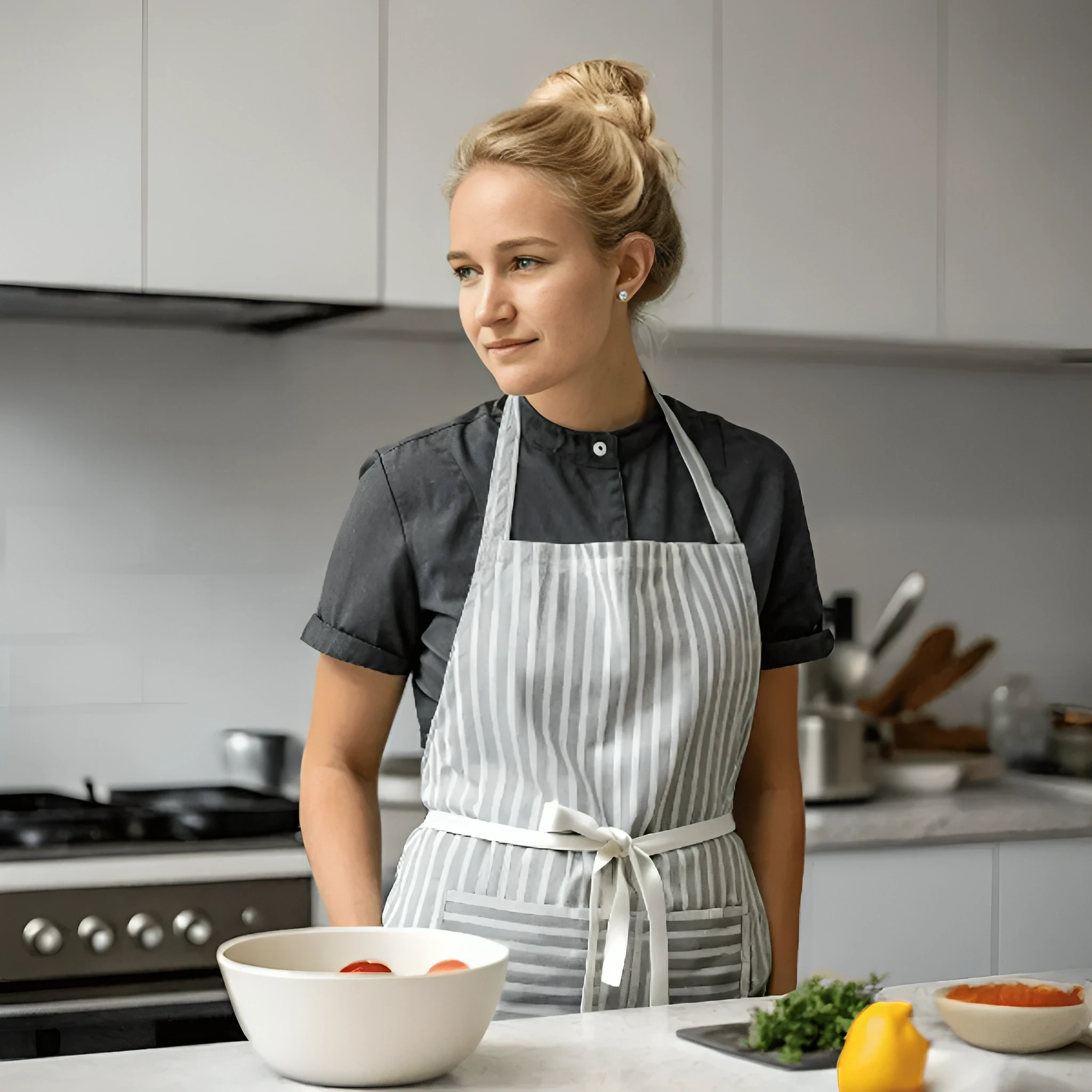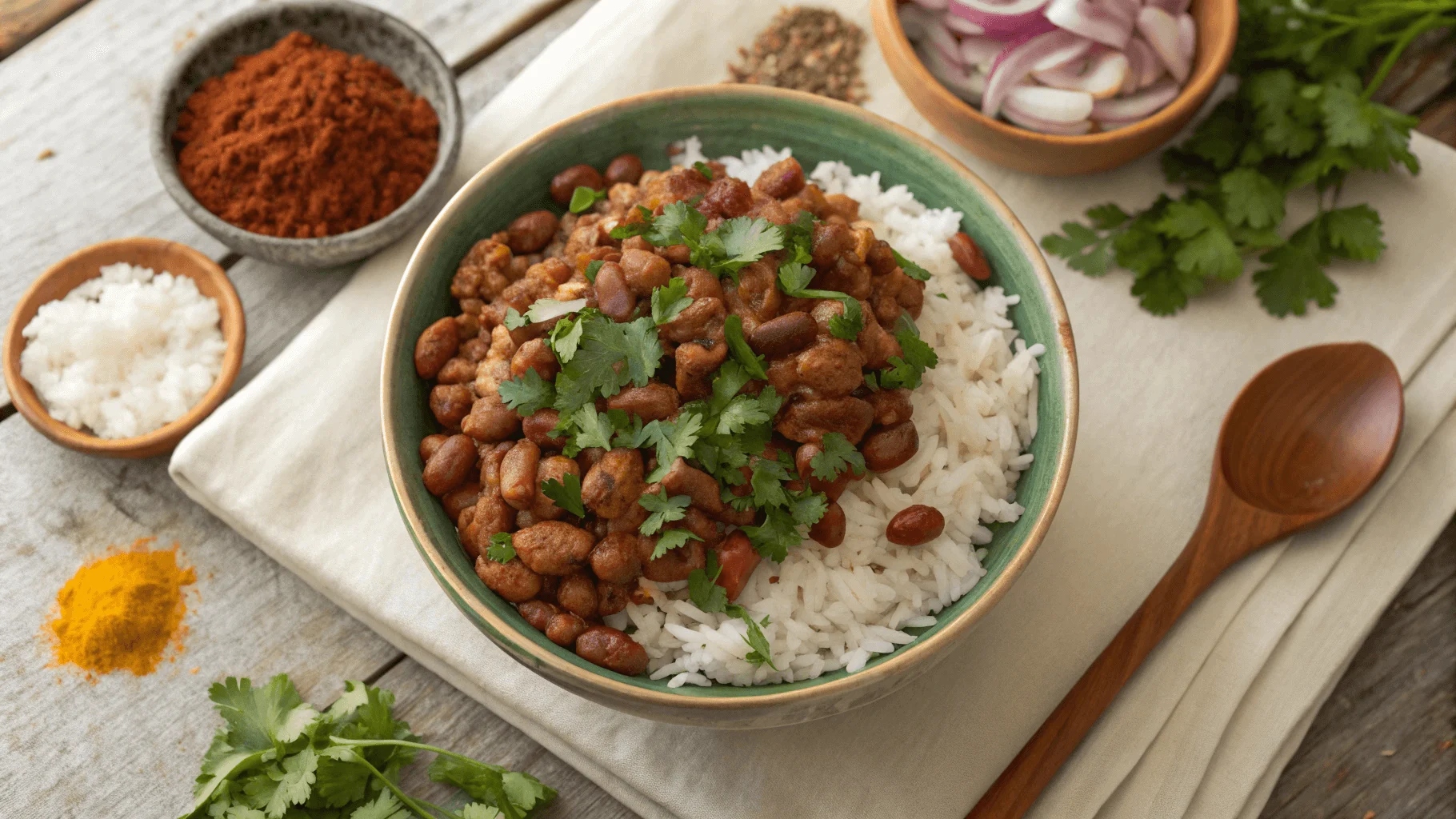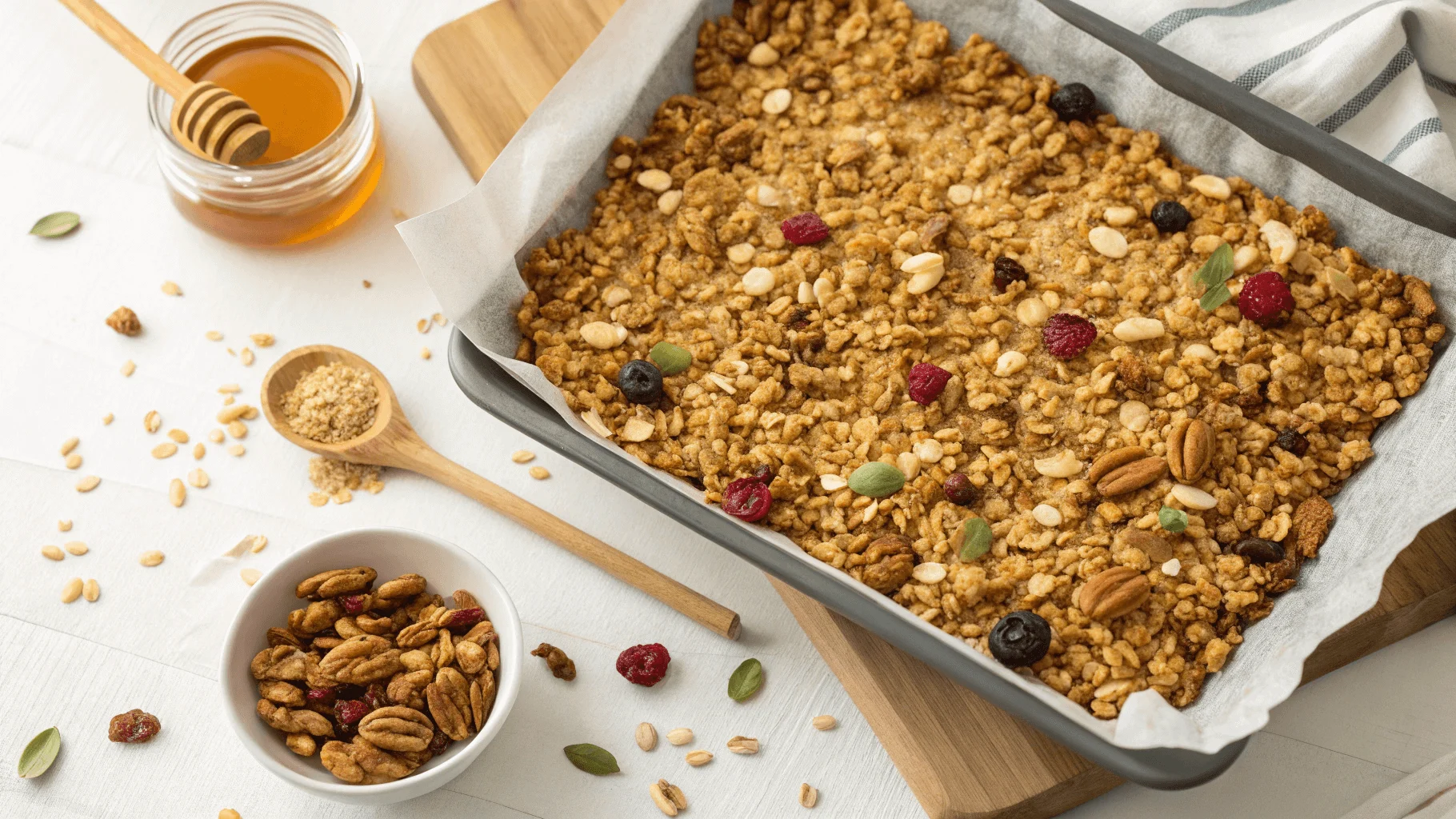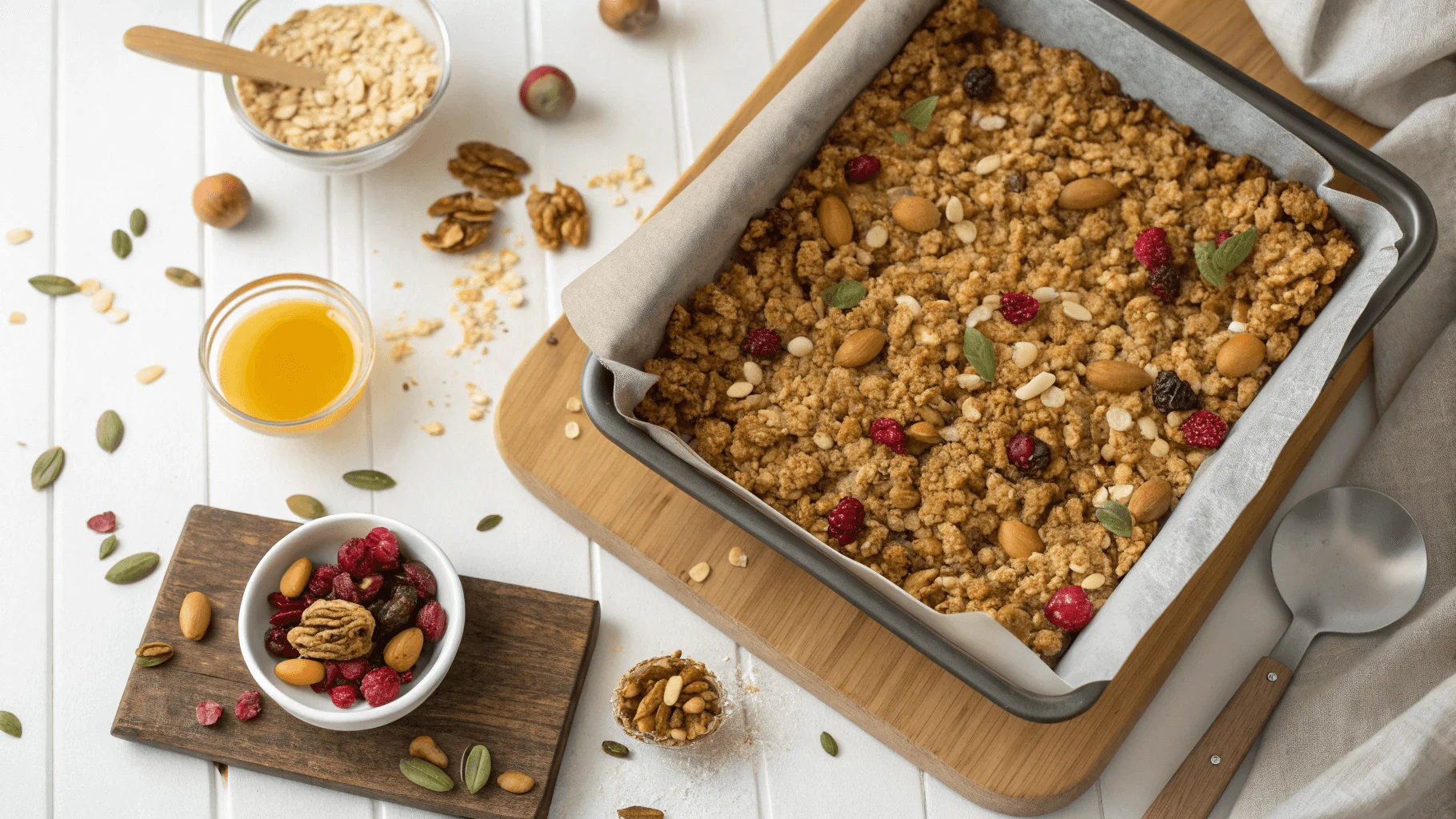The Unique Fusion of Flavors: Pickle Pie Pizza
Have you ever thought about combining the tangy crunch of pickles with the gooey delight of pizza? Welcome to the world of pickle pie pizza, a culinary creation that has been turning heads and taste buds alike. This innovative dish is not just another food trend; it’s a testament to the endless possibilities of fusion cuisine. As we dive into this topic, we’ll explore why pickle pie pizza is gaining popularity and how it fits into the broader context of modern gastronomy.
The relevance of pickle pie pizza lies in its ability to challenge traditional food boundaries. In an era where consumers are increasingly adventurous with their food choices, this pizza variant offers a unique twist that combines familiar flavors in unexpected ways. Our thesis revolves around understanding the appeal and potential of pickle pie pizza as a legitimate contender in the culinary scene. We’ll delve into its origins, the science behind its flavor profile, and its place in the evolving landscape of pizza innovation.
This article will be structured into three main sections: understanding the concept and appeal of pickle pie pizza, exploring counterarguments or alternative perspectives on its taste and marketability, and finally, examining its practical applications and implications for the future of food innovation. Each section will provide insights into different aspects of this intriguing dish, ensuring a comprehensive exploration of the topic.
Understanding the Concept and Appeal of Pickle Pie Pizza
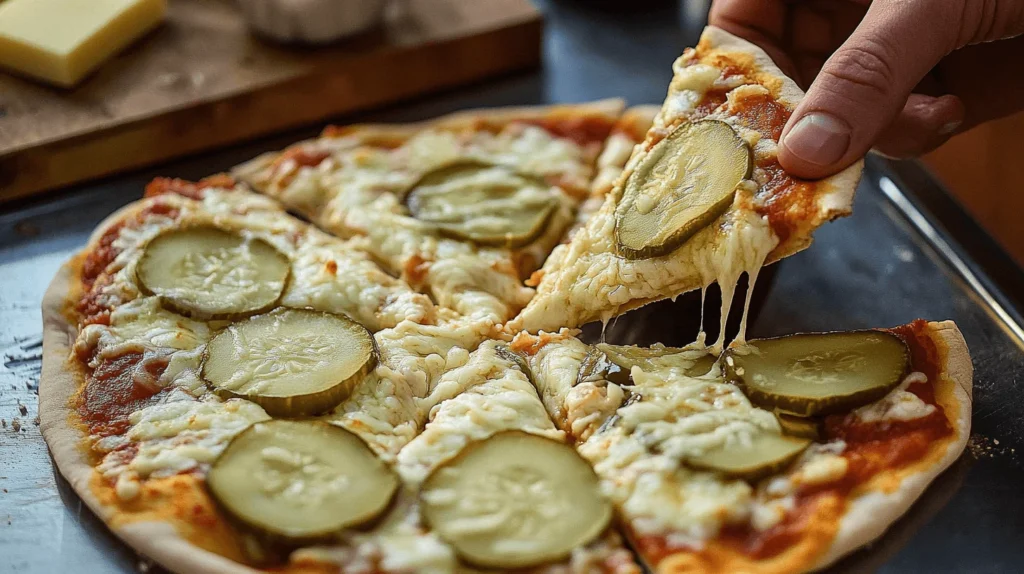
The Emergence of Pickle Pie Pizza
Pickle pie pizza represents a bold leap into the realm of unconventional toppings, blending the briny tang of pickles with the comforting familiarity of pizza. This unique combination challenges traditional pizza norms, offering a fresh take on what constitutes a delicious slice. The emergence of pickle pie pizza can be traced back to the growing trend of experimental cuisine, where chefs and home cooks alike experiment with unexpected ingredient pairings to create new taste experiences.
For example, much like the creative pairing seen in pumpkin empanadas, pickle pie pizza exemplifies the potential of combining diverse ingredients, resulting in a dish that is both surprising and satisfying.
Pickle pie pizza exemplifies the creative potential of combining diverse ingredients, resulting in a dish that is both surprising and satisfying.
The appeal of pickle pie pizza lies in its ability to evoke a range of sensory experiences. The sharp, vinegary notes of pickles contrast beautifully with the rich, cheesy base of pizza, creating a harmonious blend that stimulates the palate. This fusion is not merely about adding pickles to pizza; it’s about crafting a balanced flavor profile that respects the integrity of both components.
The Science Behind Flavor Pairing
Understanding the science behind flavor pairing helps explain why pickle pie pizza works so well. The human palate responds positively to contrasts—sweet and sour, salty and bitter, etc. Pickles, being high in acidity and salt, complement the creamy texture and mild flavors of cheese and tomato sauce. This contrast creates a dynamic taste experience that keeps diners engaged with every bite.
Research from food scientists suggests that certain combinations enhance each other’s flavors due to shared chemical compounds. For instance, lactic acid found in pickles can amplify umami flavors present in aged cheeses like Parmesan or Romano, which are often used in gourmet pizzas. These interactions elevate the overall eating experience, making pickle pie pizza more than just the sum of its parts.
If you’re intrigued by unique flavor pairings, you might also enjoy exploring the tangy and savory combinations found in delicious salmon belly, which similarly plays with complementary tastes.
Cultural Influence and Consumer Trends
Culturally, there has been a noticeable shift towards embracing unconventional foods. Consumers today are more open-minded and eager to try new things, driven by social media platforms showcasing exotic recipes and daring culinary experiments. This cultural shift aligns perfectly with the rise of pickle pie pizza, positioning it as part of a larger movement toward innovation in dining experiences.
Moreover, health-conscious consumers appreciate that pickles add nutritional value without compromising flavor. They are low in calories yet packed with probiotics beneficial for gut health. Thus, incorporating them into pizza makes sense from both a taste and wellness perspective.
If you’re interested in exploring more about how unconventional ingredients are reshaping traditional recipes, check out our guide on how to make mouthwatering ground beef pasta without tomato sauce.
To further engage readers interested in learning more about related topics such as fermentation processes involved in making pickles or regional variations of pizza styles worldwide, internal links could direct them towards relevant articles within our website network.
Transitioning smoothly now, let us examine some common criticisms leveled against pickle pie pizza before addressing these concerns head-on in the next section.
Counterarguments and Alternative Perspectives on Pickle Pie Pizza
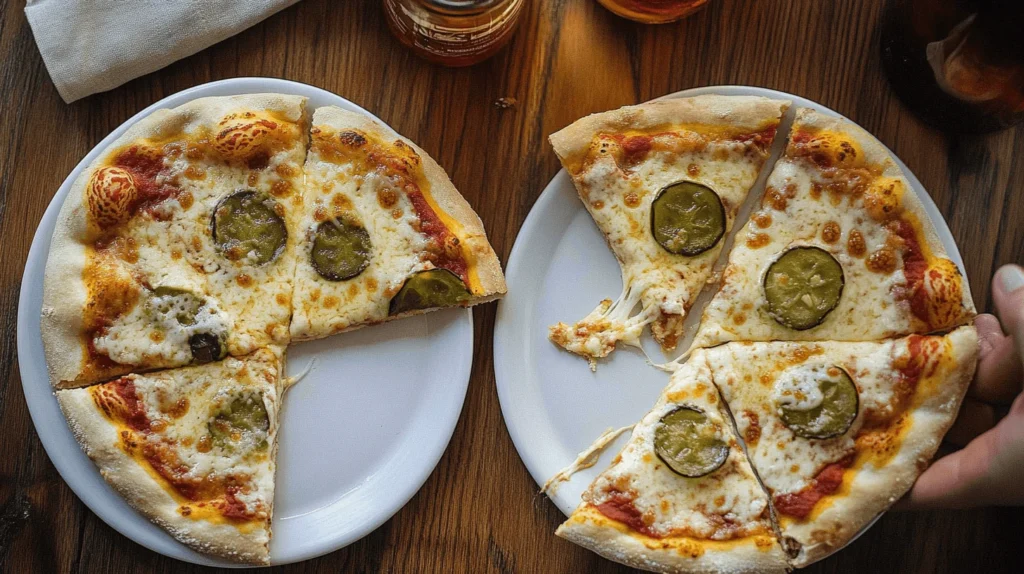
Addressing Skepticism Around Pickle Pie Pizza
While many embrace the novelty of pickle pie pizza, skeptics question whether this unusual combination truly enhances the pizza experience. Critics argue that pickles might overwhelm other flavors or clash with traditional pizza expectations. To address these concerns effectively, we must first acknowledge valid points raised by opponents and then provide compelling rebuttals supported by evidence.
Despite initial doubts about its feasibility, pickle pie pizza stands firm as a legitimate addition to the pizza repertoire when executed thoughtfully.
Concern Over Flavor Overload
One primary critique centers around the fear that pickles may dominate the entire dish, leaving little room for other tastes to shine through. However, experienced chefs know how to balance ingredients carefully so that no single component overshadows others. By controlling quantities and choosing complementary elements (such as milder cheeses or herbs), they ensure harmony rather than chaos on the plate.
Studies indicate that successful flavor combinations rely less on individual strength and more on proportionality among all components. Therefore, even strong-flavored items like pickles can integrate seamlessly if incorporated appropriately.
Resistance to Change in Traditional Foods
Another argument stems from resistance to altering classic dishes. Some purists believe that introducing non-traditional toppings undermines the authenticity of pizza itself. Yet history shows us that pizza has always evolved over time, adapting to local preferences wherever it traveled—from Naples’ simple Margherita to New York-style slices topped with everything but the kitchen sink.
Embracing Innovation Without Losing Essence
Ultimately, the key to convincing detractors lies in demonstrating that innovation doesn’t necessitate abandonment of core principles. Properly prepared pickle pie pizza maintains essential characteristics of great pizza—crispy crust, gooey cheese, flavorful sauce—while adding an exciting new dimension via pickled cucumbers. Such additions expand rather than diminish the possibilities offered by this beloved comfort food.
As we transition into discussing practical applications and future implications of pickle pie pizza, consider how embracing diversity in ingredients opens doors to unexplored territories within the culinary arts.
Practical Applications and Implications of Pickle Pie Pizza
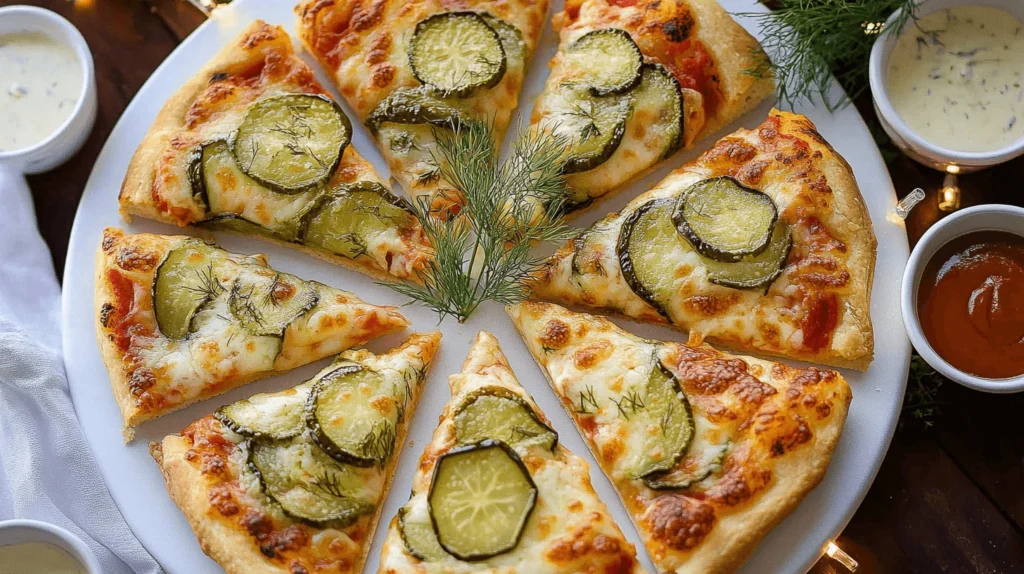
Expanding Horizons Through Culinary Experimentation
Now that we’ve addressed skepticism surrounding pickle pie pizza, let’s explore its real-world applications and broader implications for the culinary industry. This section delves into specific examples of how restaurants and home cooks have successfully integrated pickle pie pizza into menus, along with potential advancements this trend might inspire moving forward.
Pickle pie pizza serves not only as a delightful menu option but also as a stepping stone toward greater experimentation in global cuisine.
Restaurant Success Stories Featuring Pickle Pie Pizza
Several eateries across North America and Europe have already embraced pickle pie pizza, reporting positive customer feedback and increased sales figures. For example, “Slice & Dill” in Chicago gained national attention after featuring their signature dill pickle-topped pies prominently on social media platforms. Their approach involves using thinly sliced pickles combined with feta cheese and honey drizzle, appealing to adventurous eaters seeking something different yet familiar enough to enjoy immediately.
Similarly, European establishments like “Bruschetta Bar” in London offer versions infused with Mediterranean influences, including olive oil marinated artichokes alongside the pickles, catering to diverse palates while maintaining authenticity.
Future Developments and Innovations in Pickle Pie Varieties
Looking ahead, opportunities abound for expanding upon current offerings. Chefs might explore alternative types of pickling techniques—fermented versus quick-pickled—or incorporate regional specialties into recipes. Imagine Hawaiian-inspired pickle pie adorned with pineapple chunks or Tex-Mex style enhanced by jalapeño-infused brine! Each variation brings new dimensions to the table, inviting customers to embark on culinary journeys filled with discovery.
Furthermore, technological advancements in preservation methods could lead to extended shelf life for pre-packaged versions, allowing wider distribution channels beyond local pizzerias. Encouraging readers to share their own ideas or creations fosters community involvement and drives continued interest in this burgeoning field.
Transitioning now, allow me to summarize key insights gathered throughout our discussion thus far before concluding with final thoughts on where this journey may lead us next.
Conclusion
Recapitulating the Journey Through Pickle Pie Pizza
Throughout this exploration, we’ve uncovered the multifaceted nature of pickle pie pizza, highlighting its emergence as a bold culinary statement amidst shifting consumer preferences. From understanding its foundational appeal rooted in innovative flavor pairing to addressing critical perspectives concerning tradition and taste, we’ve established pickle pie pizza as more than just a fleeting trend—it represents a significant stride in culinary evolution. Our examination revealed that by balancing robust pickle flavors with traditional pizza elements, creators achieve harmonious compositions capable of captivating even the most discerning palates.
Summarizing key points:
- Flavor Pairing: The scientific basis supports combining contrasting tastes like vinegar-rich pickles and creamy cheeses.
- Consumer Trends: Modern diners seek novelty and variety, driving acceptance of unconventional toppings.
- Counterarguments Addressed: Rebuttals demonstrated that thoughtful execution preserves pizza essence while innovating.
- Practical Applications: Real-life successes showcase adaptability across cultures and cuisines.
- Future Potential: Opportunities exist for further experimentation and technological enhancement.
Final Thought: As we stand on the brink of unprecedented culinary exploration, one must wonder—what other seemingly disparate ingredients await discovery together on the humble pizza canvas?
Future Outlook: With ongoing developments in food technology and increasing global connectivity, who knows what tomorrow holds for pickle pie pizza? Perhaps automated kitchens will perfect mass production techniques preserving artisanal quality or entirely new hybrid creations will emerge blending Eastern spices with Western comfort foods—all starting perhaps right here with the humble pickle atop a warm, cheesy slice.
For those intrigued by deeper dives into particular aspects touched upon herein, FAQs below aim to clarify lingering queries while offering additional resources through referenced materials listed accordingly.
FAQs
- What makes pickle pie pizza different from regular pizza?
- Answer: It incorporates pickled cucumbers either as primary toppings or integrated into sauces, providing distinctive tanginess unmatched by conventional options.
- Is pickle pie pizza healthier compared to standard varieties?
- Answer: Yes, due to added probiotics from fermented pickles plus reduced reliance on heavy meats often seen in classic styles.
- Where can I find authentic pickle pie pizza near me?
- Answer: Search locally via online directories listing specialty pizzerias or check out popular chains known for eclectic offerings.
- How do I make homemade pickle pie pizza?
- Answer: Follow detailed step-by-step guides available online, emphasizing proper ingredient selection and cooking techniques for optimal results.
- Will pickle pie pizza become mainstream eventually?
- Answer: Likely yes, given growing demand for inventive dishes coupled with supportive industry trends favoring customization and personalization.
Pickle Pie Pizza
Indulge in the delightful fusion of tangy pickles and gooey cheese with our mouthwatering pickle pie pizza . This innovative dish combines crispy crust, creamy mozzarella, zesty marinara sauce, and briny dill pickle slices for a flavor explosion that’s perfect for adventurous eaters. Whether you’re hosting game night or craving something unique, this pizza is sure to impress with its bold taste and satisfying texture. It’s also customizable for dietary preferences, making it a versatile option for any meal.
- Prep Time: 15 minutes
- Cook Time: 12-15 minutes
- Total Time: 27-30 minutes
- Yield: 1 large pizza
- Category: Lunch, Dinner, Snack
- Cuisine: American / Fusion
Ingredients
- 1 pre-made pizza dough (or homemade, if preferred)
- 1 cup marinara sauce (homemade or store-bought)
- 2 cups shredded mozzarella cheese
- 1/2 cup grated Parmesan cheese (optional, for extra umami)
- 1/2 cup thinly sliced dill pickles (adjust according to preference)
- 2 tablespoons olive oil (for drizzling)
- Fresh basil leaves (for garnish)
- Salt and pepper (to taste)
- Optional Toppings: Feta cheese, red pepper flakes, honey drizzle
Instructions
- Preheat Oven : Set your oven to 450°F (230°C). Place a baking stone or large baking sheet inside to heat up while preparing the pizza.
- Prepare Dough : Roll out the pizza dough into your desired shape on a lightly floured surface. Transfer it onto a piece of parchment paper or a pizza peel dusted with cornmeal.
- Add Sauce : Spread an even layer of marinara sauce over the dough, leaving about 1/2 inch around the edges for the crust.
- Cheese Layer : Sprinkle shredded mozzarella evenly over the sauce, followed by grated Parmesan if using.
- Pickle Slices : Arrange thin dill pickle slices across the cheese in a single layer, ensuring they are distributed evenly.
- Season and Drizzle : Lightly season with salt and pepper, then drizzle olive oil over the top for added richness.
- Bake : Carefully slide the pizza (with parchment paper if needed) onto the preheated baking stone or sheet. Bake for 12-15 minutes, or until the crust is golden brown and the cheese is bubbly.
- Garnish : Remove from the oven and let it cool slightly. Garnish with fresh basil leaves and optional toppings like feta cheese or a drizzle of honey for sweetness.
- Serve : Slice and serve hot!
Notes
- Substitutions : For a vegan version, replace mozzarella with plant-based cheese alternatives and ensure the marinara sauce is free of animal products.
- Topping Variations : Experiment with different pickle types (sweet or spicy), add caramelized onions, or incorporate arugula for freshness.
- Storage Tips : Store leftovers in an airtight container in the refrigerator for up to 3 days. Reheat in the oven for best results.
- Serving Suggestions : Pair with a crisp salad or garlic bread for a complete meal. For dessert, consider pairing with something sweet like lemon bars to balance the savory flavors.
Nutrition
- Serving Size: 4-6 servings
- Calories: 350 kcal
- Fat: 15g
- Carbohydrates: 35g
- Fiber: 2g
- Protein: 12g

